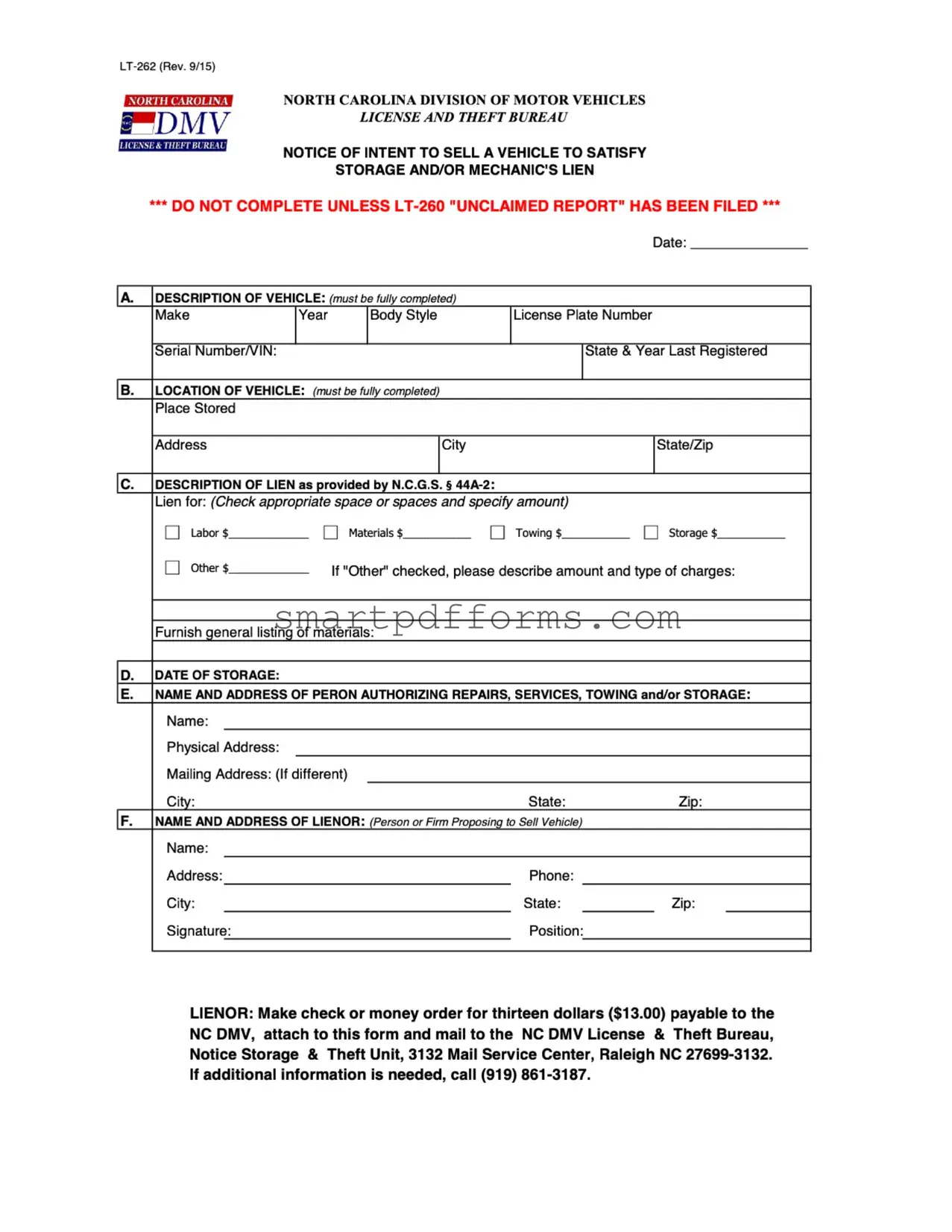In North Carolina, the process for an entity to sell a vehicle to satisfy a lien for unpaid storage and/or mechanic's work is legally structured and involves specific documentation, one key document being the LT-262 form. Revised in November 2012, this form is a critical step in the process, coming into play after the LT-260 "Unclaimed Report" has been filed, indicating that a vehicle has been left unclaimed. The LT-262 form serves as a notice of intent to sell the vehicle, providing detailed information including, but not limited to, the vehicle's description (make, year, body style, license plate number, and serial number/VIN), the location where the vehicle has been stored, details of the lien (specifying the amount and type of charges such as labor, materials, towing, storage, or other), and the date of storage. It also records the identities and addresses of both the person who authorized the repairs, services, towing, and/or storage and the lienor (the person or firm proposing to sell the vehicle). Completing this form requires a $10.00 fee, payable to the NC DMV, and it is a mandatory step in ensuring that the sale of the vehicle complies with North Carolina General Statutes Section 44A-2, which governs liens for personal property, including vehicles. Contact information is provided for further assistance, underscoring the form's importance in the legal process surrounding the satisfaction of storage and/or mechanic's liens on vehicles in North Carolina.

